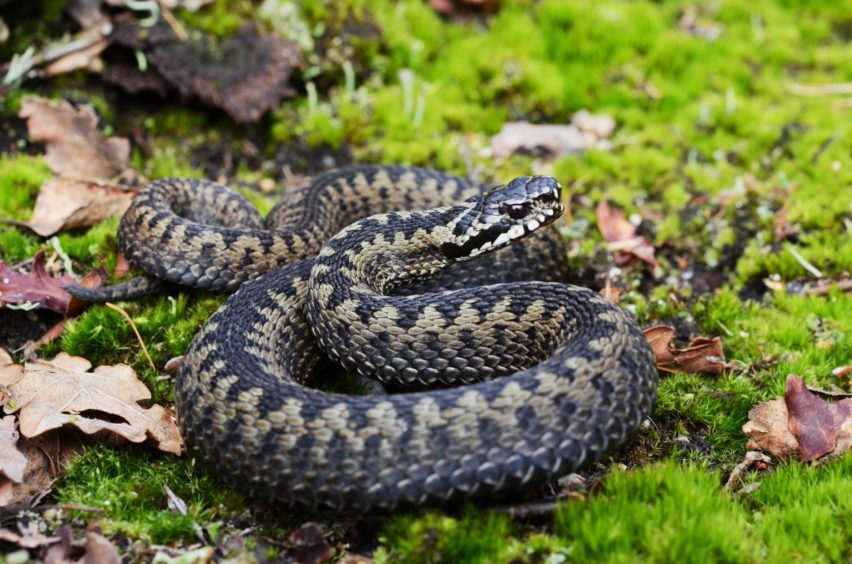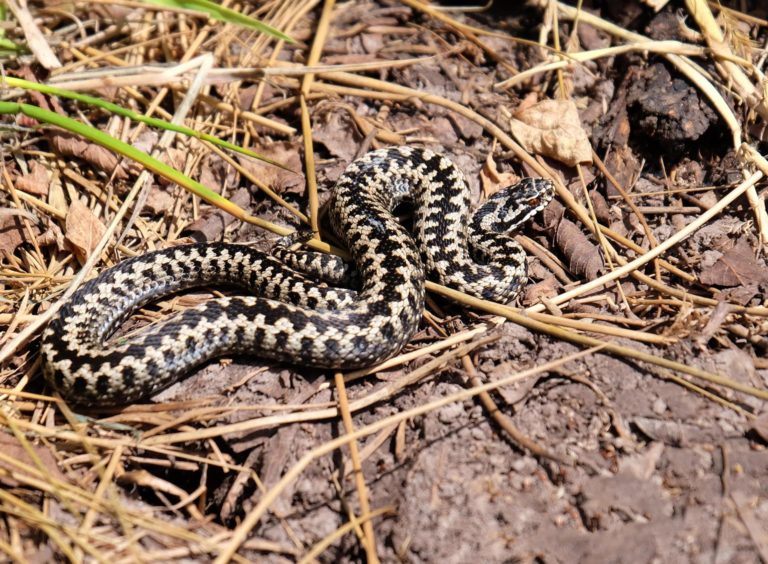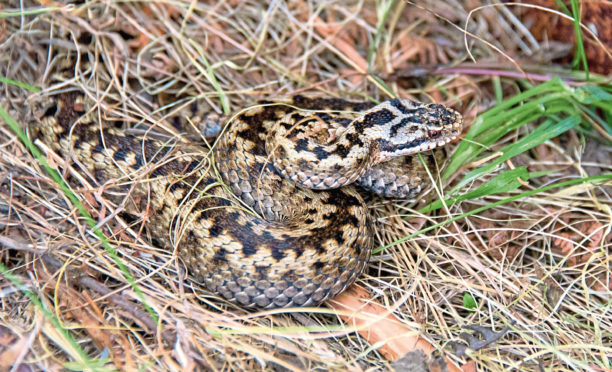Snakes are a bit like spiders, given that even the most rational people can have the most irrational phobias to them. It is an innate characteristic of the human psyche and since the earliest of times snakes have invoked fear, loathing and trepidation.
Such depth of feeling was vividly brought home to me when my wife, Lynda, and I stumbled upon an adder sunning itself on a path near Dunkeld. Her measured response was to run back down the track with hands in the air screaming, ‘snake, snake!’, leaving the bemused adder to slide harmlessly away into the undergrowth.

Such human reactions are typical, but does the adder, Scotland’s only snake, really deserve such a fearful reputation? The facts suggest not, for while the adder is indeed venomous, it is rare for a person to get bitten. Adders are timid creatures and have no desire for confrontation, with the most common sight of one usually being a fleeting glimpse as it races for cover.
Adder bites can deliver nasty side effects, including swelling, drowsiness, vomiting and diarrhoea, although it is also not unusual for a much milder body reaction. One study found that many adder bites are ‘dry’, with less than the maximum amount of venom injected. An adder is designed to kill small prey items such as voles, not to bring down a 12 stone person. Some people, however, will be more susceptible to venom than others, and it is always essential to seek urgent medical attention if bitten, especially if a child is the victim. Most bites occur when a snake is accidently trodden upon, or if someone is foolhardy enough to pick one up.
This is a great time of year to see adders as they have just emerged from hibernation and like nothing better than to bask on paths or bare patches of ground, soaking up the warmth from the morning sun.

Adders feed on mice and voles, lizards, amphibians and the chicks of ground-nesting birds such as meadow pipits. When a vole is struck by the fangs, it will initially flee, but soon succumbs to the venom. The adder follows the creature’s death trail and then swallows it whole.
I know of several hotspots where I am virtually guaranteed to see adders, especially during spring. These include the Angus glens and parts of Perthshire.
One encounter in Glen Lethnot lingers in my mind. I was scrambling up a steep incline,
and inadvertently cornered a baby adder on a small ledge. Despite only being a few inches long, the snake aggressively struck out at me as this was its last line of defence and it had nowhere to go.
Truth be told, the adder was more scared of me than I was of it. The lesson is – always give an adder room to manoeuvre. A cornered snake will bite, but it would much rather have the space to slither away to safety.
Info
Female adders are larger than males. Adders mate in May and have favoured areas where the males and females congregate. During courtship, males rear up in a swaying dancing display.










